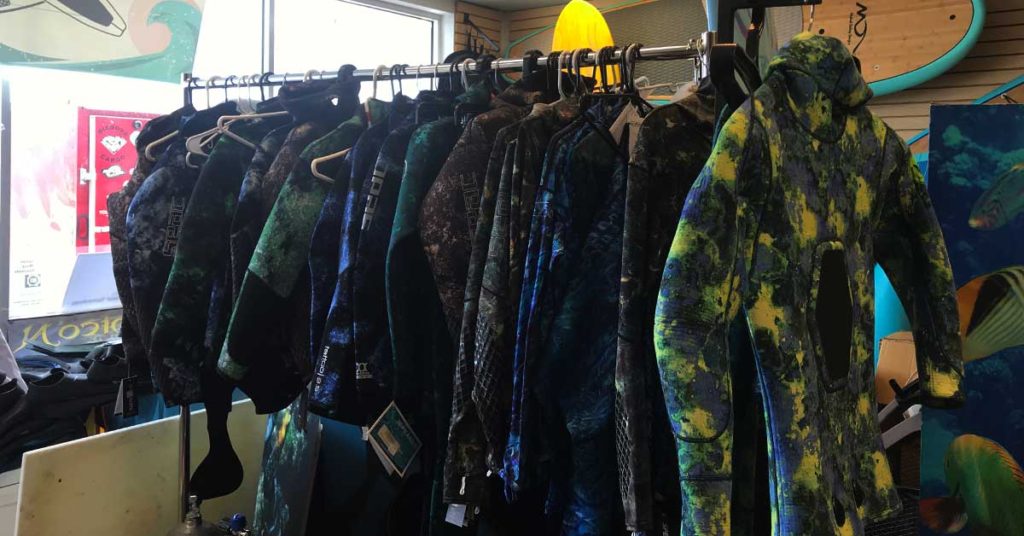Water conducts heat away from your body 25 times faster than air does. This is why you need exposure protection.
What exposure suits do
Exposure suits don’t actually “make” you warm. They slow down heat loss so that you can remain comfortable longer.
Wetsuits and drysuits work by surrounding your body with insulation. In wetsuits, this is neoprene foam. With shell drusuits, the insulation comes from special undergarments.
- Because you maintain a constant volume of gas within a drysuit, the undergarments have the potential of providing as much insulation at depth as they do at the surface.
- Wetsuits, on the other hand, compress with depth, losing their ability to insulate the deeper you go. Beyond 100 feet, even the thickest of wetsuits can be paper thin. This is why tech divers rely almost exclusively on drysuits.
- Single-layer dive skins provide no They exist chiefly to provide protection against sunburn, scrapes and abrasions, and to make wetsuits easier to don.
- Multi-layer fabric laminate suits may provide some This can be anywhere between what a 0.5 mm and a 2.0 mm suit might provide. One benefit with these suits is that they don’t compress with depth.
The importance of fit
You need to keep the amount of water that enters your wetsuit to a minimum. Water, after all, is a conductor, not an insulator.
- Water that enters a properly fitting suit will eventually warm to body temperature. That doesn’t “make” you warm — but it does help prevent further heat loss.
- On the other hand, if water can circulate freely throughout your suit, the water you worked hard to warm to body temperature will be constantly replaced by colder water.
Because of this, a thinner wetsuit that fits properly might actually keep you warmer than a thicker wetsuit that allows water to circulate freely. It is no substitute, however, for a suit of the correct thickness that fits properly.
- You may be able to compensate for an ill-fitting wetsuit by wearing a dive skin or fabric laminate suit under it. This won’t necessarily add insulation, but it may cut down on the amount of colder water that circulates through the suit.
- It is better, though, to simply have a suit that fits. Even though layering may help keep you warmer, remember that you have to wash, dry, transport and store all those extra pieces.
You should now have a better idea of exactly how drysuits, wetsuits and dive skins work to help keep you warmer under water. If you have questions about anything you have read, feel free to ask us. — © 2020-2021, Sinulogic LLC


